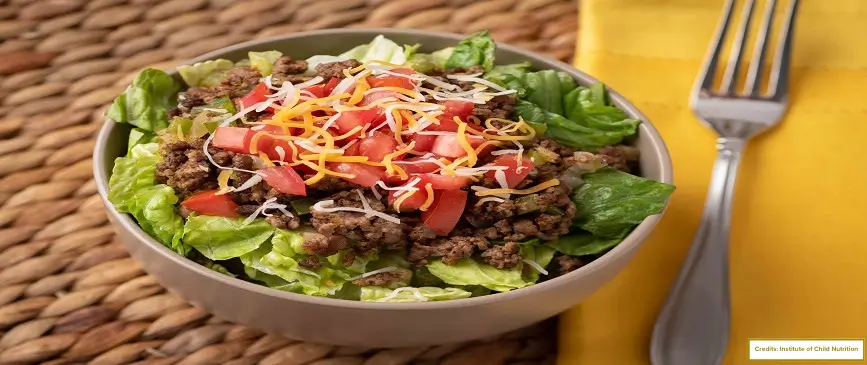Introduction
Do you remember the buzz of anticipation on pizza day or the thrill of scoring chocolate milk on a Friday?
Those who grew up in the 1980s will agree that school lunches were more than sustenance. The meals were a cornerstone of their childhood memories and unfailingly comforting.
While no one debated or worried about nutritional education back then, the cafeteria still managed to leave its mark. Let’s dive into the iconic foods, the rules and regulations, and how these school lunches compare to modern times.
What Was on the Tray? Iconic 1980s School Cafeteria Food Items
The food served in 80s school cafeterias was both practical and indulgent. Designed to fill bellies on a budget, it leaned heavily on processed items and simple recipes. Despite or perhaps because of their simplicity, these meals remain firmly planted in our collective memory.
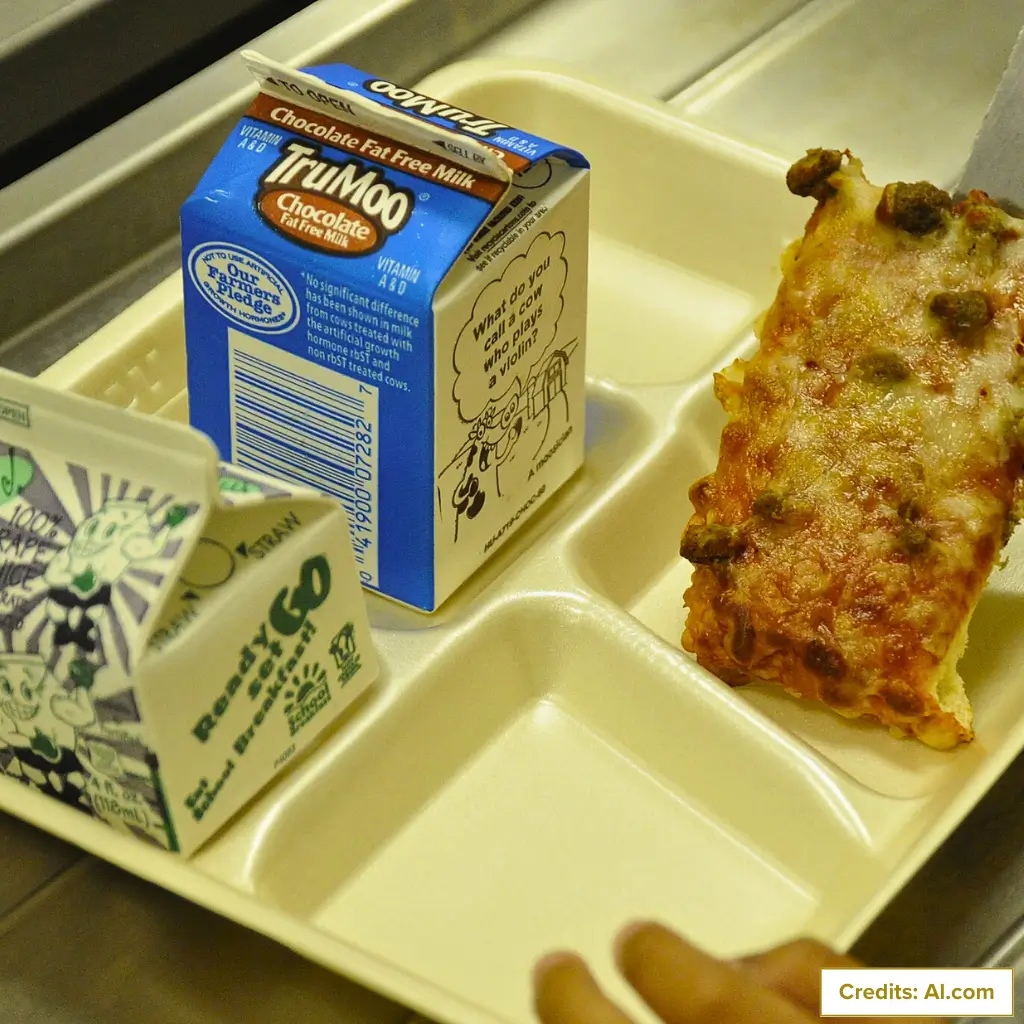
Here’s a look at the quintessential 80s school cafeteria food:
The Stars of the Cafeteria
- Pizza: Who could forget the rectangular slices of pizza? With their thick crusts, generous cheese, and sometimes pepperoni, these pizzas were a lunchtime highlight. Often paired with a canned fruit cocktail or a scoop of applesauce, they hit the perfect balance of sweet and savory.
- Tater Tots and Fries: These crispy delights were a favorite side dish, often stealing all those other offered school breakfast options. Whether paired with a burger or eaten solo, they were a must-have for any cafeteria connoisseur.
- Chocolate Milk Fridays: While plain milk was the daily staple, Fridays brought the excitement of chocolate milk. It was a coveted treat, turning an ordinary lunch into a mini celebration.
- Hot Dogs and Burgers: Foot-long hot dogs and cheeseburgers of questionable quality often made their way onto trays. While not gourmet, they were filling and satisfying.
- Sweet Treats: Desserts like chocolate pudding, Jell-O cups, and fruit roll-ups rounded out meals. Capri Sun pouches, though tricky to open without a juice explosion, were also a frequent sight.
Apart from these many high school cafeterias, open campus policies allowed students to escape the cafeteria chaos for fast food options. This led to rows of local restaurants being overrun by teens. Brown-bagging lunches or eating on benches with friends was equally shared, reinforcing the cafeteria as a place of connection and chaos.
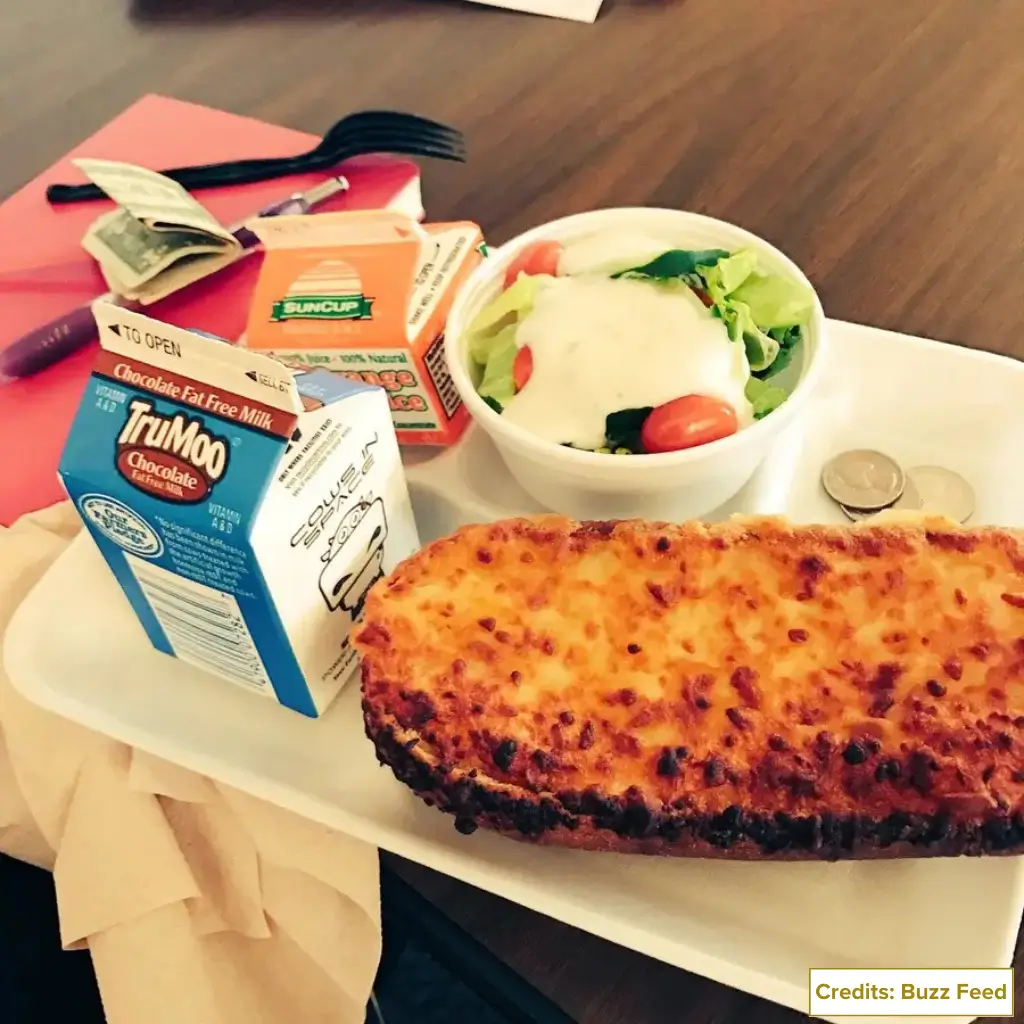
School Food Laws, Regulations, and Rules in the 80s
The 1980s were a period of significant challenges for school meal programs. Budget cuts and shifting priorities made affordability the cornerstone of school lunches,s particularly at the expense of quality and nutrition.
- National School Lunch Program (NSLP): The NSLP core program, established in 1946, continued to guide school lunches throughout the 1980s. It primarily aimed to provide affordable meals to students rather than ensure highly nutritious ones.
- Federal Budget Cuts in 1981: The Reagan administration implemented significant budget cuts to the school lunch program, reducing federal funding by $1 billion. This led to relaxed standards and a focus on cost efficiency.
- Minimum Nutritional Standards: The USDA’s guidelines require school lunches to provide a “minimum nutritional value.” However, these standards were often vague and not very strict, allowing for high-sodium, high-fat, and sugary meals.
- Ketchup and Pickle Relish as Vegetables (1981): In one of the most infamous decisions, the Reagan administration reclassified ketchup and pickle relish as vegetables, a move that sparked controversy and symbolized the minimal nutritional guidelines of the time.
- Processed Foods in Cafeterias: The growing reliance on processed foods became prevalent in the 1980s as schools turned to pre-packaged meals that were cheaper, quicker to prepare, and could be mass-produced.
- Corporate Fast-Food Vendors in Schools: The relaxation of standards allowed major fast-food chains like McDonald’s, Chick-fil-A, and Little Caesar’s to supply school meals. This benefited schools financially and provided consistent revenue for big corporations, although it didn’t necessarily promote better nutrition.
While these measures ensured that millions of students were fed daily, the nutritional value of these meals was often overlooked. The primary goal was just to provide inexpensive and quick-to-serve meals. As a result, meals were often high in fat, sugar, and sodium, with minimal attention paid to nutritional content, far from the focus on healthy school cafeterias we see today.
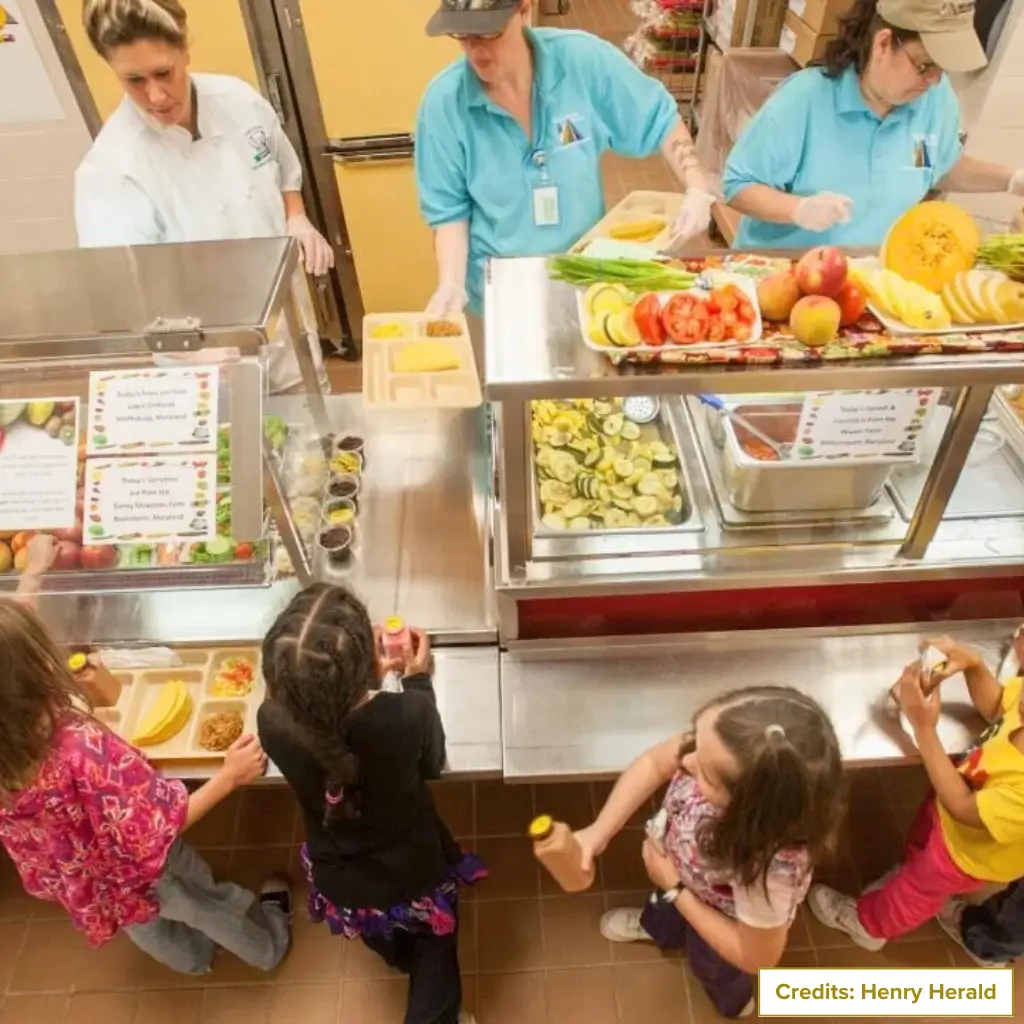
Then vs. Now: How School Lunches Have Changed?
Over the years, there have been many challenges in providing healthy meals in schools, but there’s been a lot of progress thanks to changes in policies and efforts from school districts and organizations. The shift started in the early 2000s, as rising childhood obesity rates prompted policy changes.
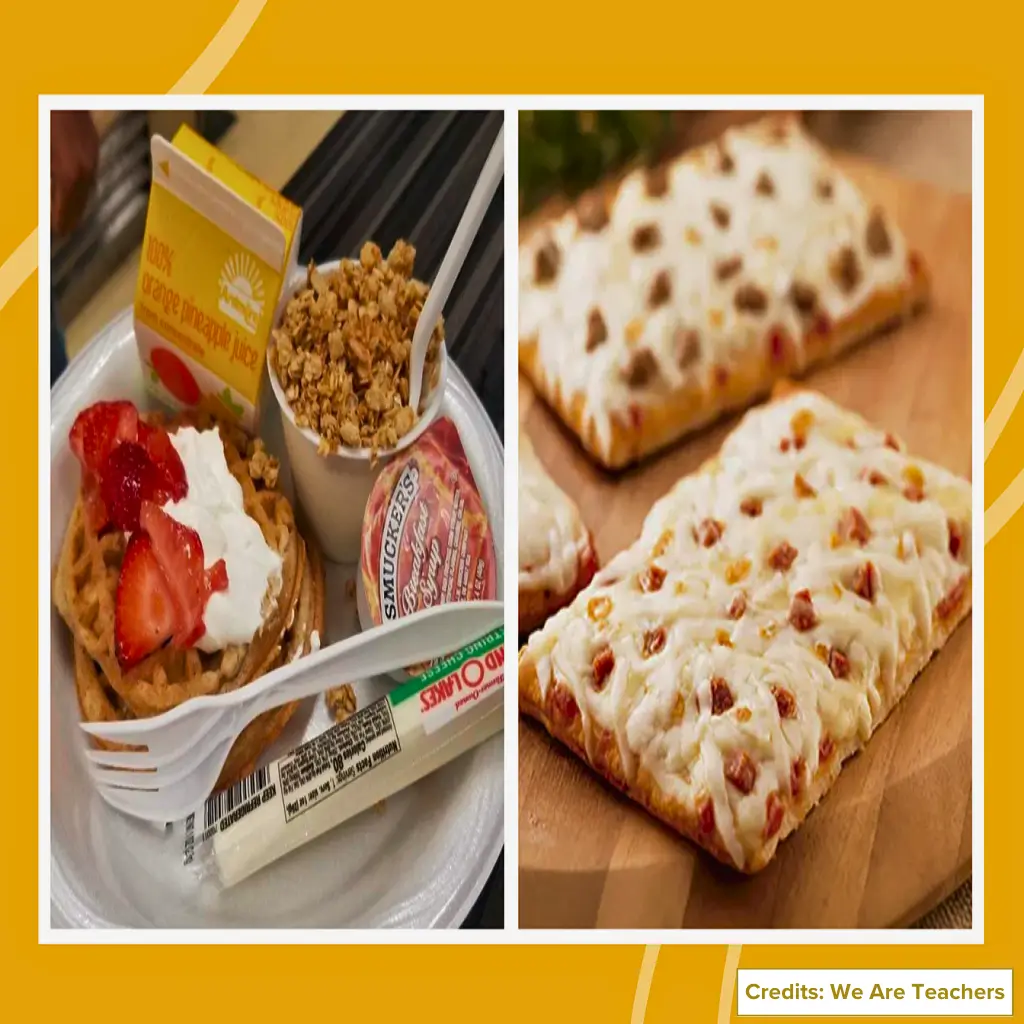
Today, school meals are very different from those in the 80s. Initiatives like scratch cooking, salad bars, and taste tests that involve students in meal planning and programs like Michelle Obama’s “Let’s Move!” campaign emphasize the importance of balanced meals and aid in promoting healthy eating. These differences reflect not only advances in food science but also cultural shifts in how we view nutrition and education
Let’s compare and see how school lunches have evolved in between the two eras:
80s School Cafeteria Lunches
- School cafeteria food heavily relied on processed foods, canned sides, and sugary desserts.
- Meals were high in sodium, fats, and empty calories.
- Generous portions, but little regard for food allergens or dietary restrictions.
- Limited variety, with few options for dietary needs like vegetarian or gluten-free meals.
- There is no education or emphasis on balanced eating or understanding the nutritional value of lunches in school cafeterias.
- Standardized meals offer no customization or student input on their cafeteria food choices.
Today’s School Cafeteria Lunches
- School cafeterias now prioritize fresh produce, whole grains, and lean proteins in their meals.
- Programs like the Healthy, Hunger-Free Kids Act have helped improve school cafeteria food, requiring meals to meet stricter nutritional standards.
- Salad bars, allergen-free zones, and student input in meal planning are common, fostering healthier lunches in school cafeterias.
- Greater focus on using local, organic ingredients and a wider range of dietary options.
- Cafeteria workers use healthier cooking methods, such as baking, steaming, and grilling, to replace frying, reducing reliance on processed sugar.
While today’s menus are undeniably healthier, some argue they lack the carefree simplicity of the 80s. Striking a balance between health and the nostalgic joy of school lunches remains a challenge.
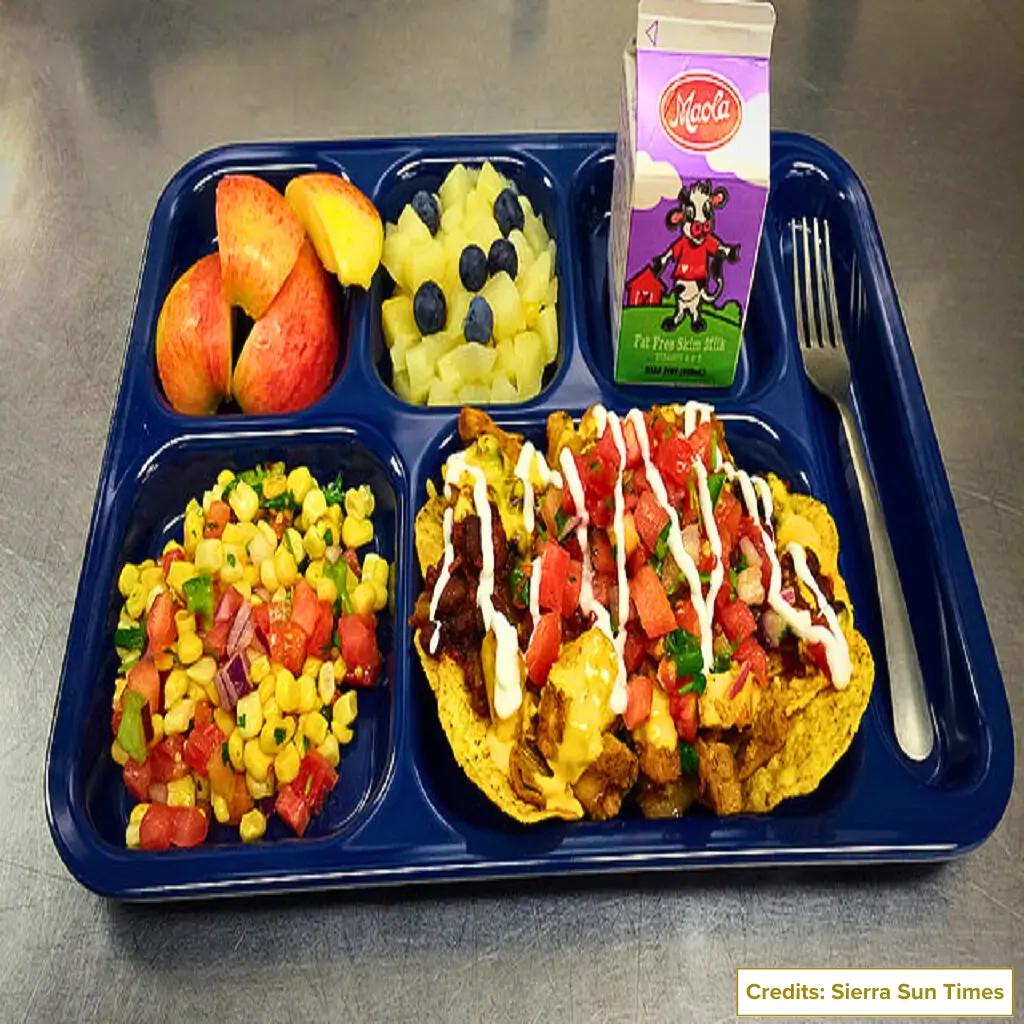
Retro Recipes: Bringing 80s School Lunches to Your Kitchen
If you miss the delightful joys of ’80s school cafeteria food, don’t worry! With a little creativity, you can recreate those nostalgic dishes at school, which are modernized for today’s tastes and health standards. Here are a few of the student’s loved ones:
1. Rectangular Pizza
Rebake this classic using a sheet pan. Spread marinara sauce over the dough, top with mozzarella and pepperoni, and bake until golden.
2. Tater Tot Casserole
Combine crispy tater tots with ground beef, shredded cheese, and cream of mushroom soup for a comforting dish that channels the best of cafeteria cooking.
3. Jell-O Cups
Make a healthier version of this staple using fruit juice and unflavored gelatin. Pour into cups, chill, and serve for a refreshing dessert.
4. DIY Pepperoni Rolls
Stuff soft dough with slices of pepperoni and bake until golden. These portable snacks are perfect for holiday school cafeteria lunches.
Lessons from the Lunchline: What the 80s Can Teach Us Today
The 80s school lunches remind us of a time when food wasn’t overcomplicated. They were simple, satisfying, and brought people together. While we’ve made great strides in promoting healthier school meals, there’s still something to learn from the sense of connection and joy those lunches provided.
Suggested Reading: Simple Steps for Healthy School Cafeteria.
FAQs
How do ’80s school lunches compare to today’s?
Lunches in the 1980s focused on affordability and convenience, heavily relying on processed foods. Today’s lunches prioritize fresh, balanced meals with options for dietary restrictions and nutritional education.
What role did processed foods play in 80s school cafeterias?
Processed foods were the backbone of ’80s school lunches. They were affordable, easy to prepare in bulk, and had long shelf lives, making them ideal for schools on tight budgets.
Did ’80s school lunches have any healthy options?
Healthy options were rare. Meals often lacked fresh fruits and vegetables, and the focus was on filling, easy-to-prepare foods like pizza and fries rather than balanced nutrition.

